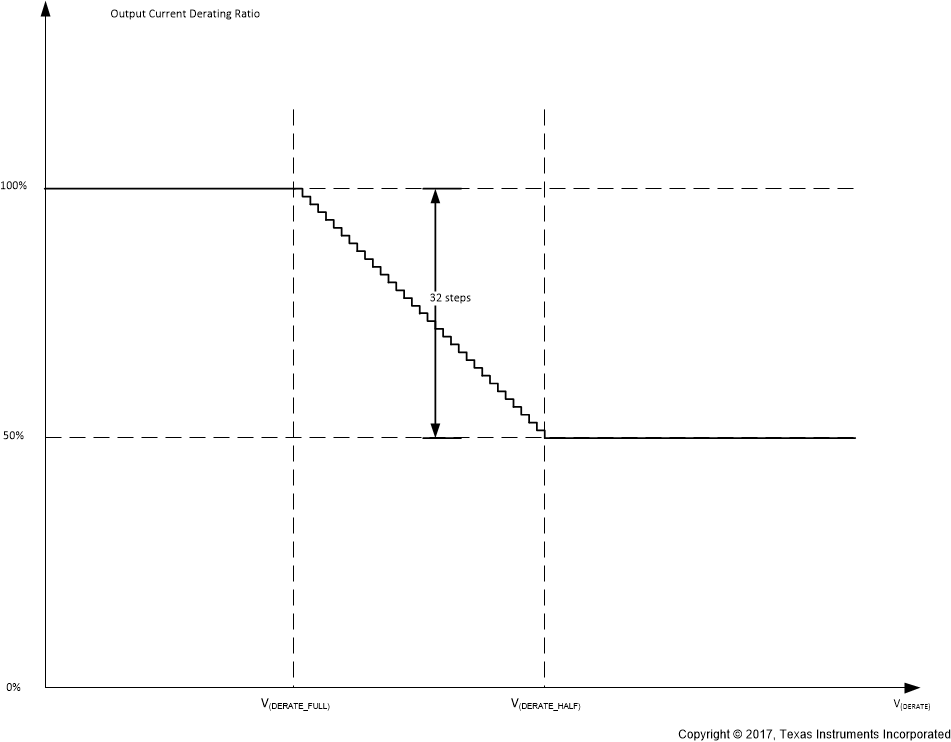JAJSE12A October 2017 – October 2017 TPS92830-Q1
PRODUCTION DATA.
- 1 特長
- 2 アプリケーション
- 3 概要
- 4 改訂履歴
- 5 概要(続き)
- 6 Pin Configuration and Functions
- 7 Specifications
- 8 Detailed Description
- 9 Application and Implementation
- 10Layout
- 11デバイスおよびドキュメントのサポート
- 12メカニカル、パッケージ、および注文情報
パッケージ・オプション
メカニカル・データ(パッケージ|ピン)
- PW|28
サーマルパッド・メカニカル・データ
- PW|28
発注情報
8.3.6.1 Output-Current Derating Topology
Voltage at the DERATE pin, V(DERATE), is used for output-current-derating control. To set the V(DERATE) voltage, a resistor divider on supply voltage VIN is typically used for supply overvoltage protection.
- When VDERATE is lower than V(DERATE_FULL), output current derating is not enabled; thus, output-current derating ratio k(DERATE_Dim) is at 100%.
- When VDERATE is higher than V(DERATE_HALF), output current derating is limited to 50%; thus, output-current derating ratio k(DERATE_Dim) is at 50%.
- When V(DERATE) is between V(DERATE_FULL) and V(DERATE_HALF), the output-current-derating ratio is negatively proportional to V(DERATE) with 32 steps. Current derating is rounded to the next-lower step. The output-current-derating ratio can be calculated using the following equations.
Equation 8. 

Equation 9. 

 Figure 28. Output-Current Derating Profile
Figure 28. Output-Current Derating Profile